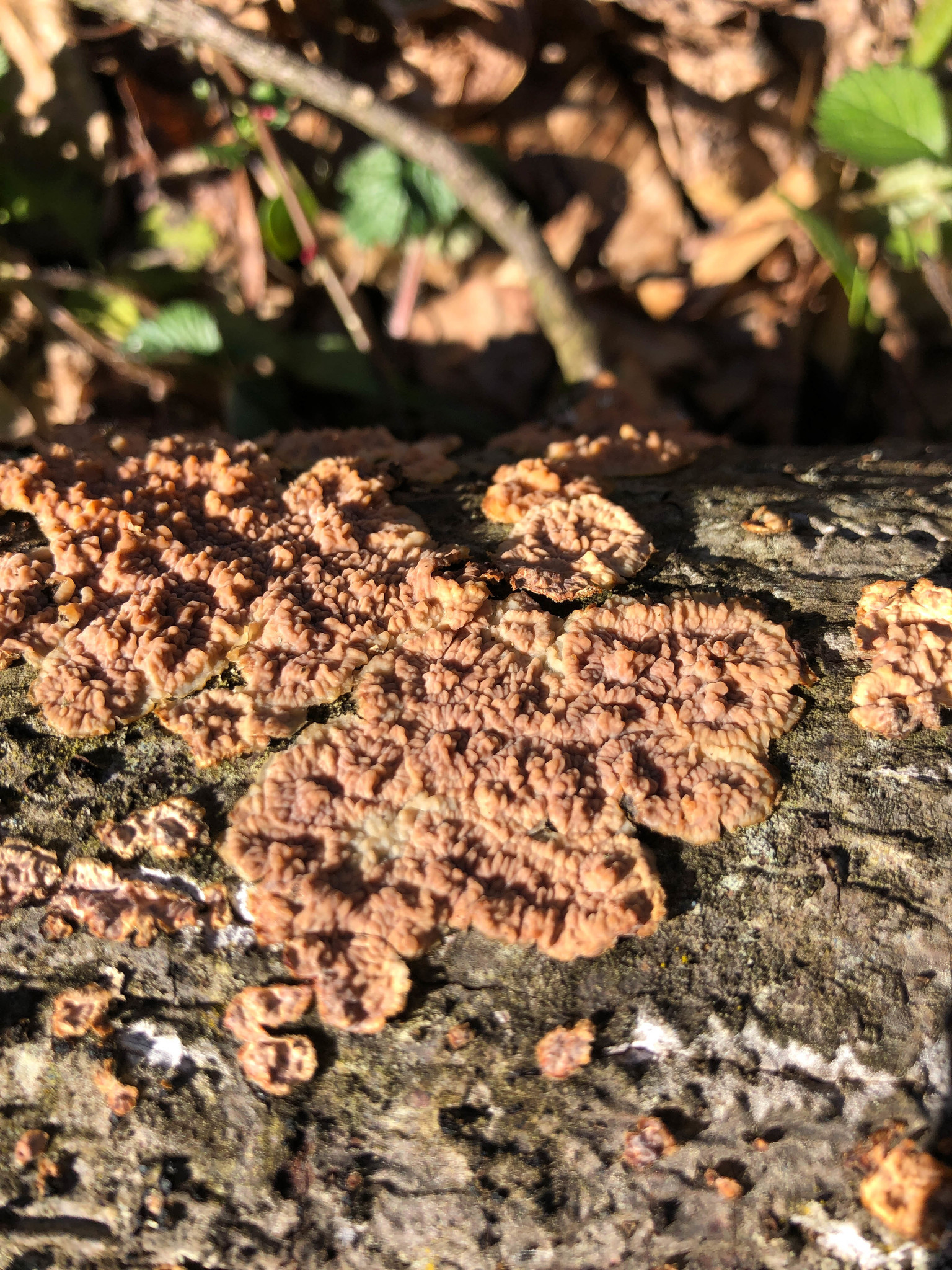Map Snapshot
















50 Records
Description
Fruiting body: Fertile surface: Usually orange to pink, occasionally tan or red-purple; multiple wrinkles and folds usually radiating from a central point; often merge into extensive patch; may develop a white, hairy, wavy edge (J. Solem, pers. comm.).
Where To Find
Irregular patches on hardwood and conifer logs (J. Solem, pers. comm.).
Seasonality Snapshot
Source: Wikipedia
| Phlebia radiata | |
|---|---|

| |
| Scientific classification | |
| Domain: | Eukaryota |
| Kingdom: | Fungi |
| Division: | Basidiomycota |
| Class: | Agaricomycetes |
| Order: | Polyporales |
| Family: | Meruliaceae |
| Genus: | Phlebia |
| Species: | P. radiata
|
| Binomial name | |
| Phlebia radiata Fr. (1821)
| |
Phlebia radiata, commonly known as the wrinkled crust,[1] is a common species of crust fungus in the family Meruliaceae. It is widespread in the Northern Hemisphere. It grows as a wrinkled, orange to pinkish waxy crust on the decaying wood of coniferous and deciduous trees, in which it causes a white rot.[2] The fungus was first described scientifically in 1821 by Elias Magnus Fries.[3]
Description
[edit]The fruitbody of Phlebia radiata is resupinate—flattened against its substrate like a crust. It is wrinkled, orange to pinkish in color, and has a waxy texture. It is circular to irregular in shape, reaching a diameter up to 10 cm (3.9 in),[2] although neighbouring fruitbodies may be fused together to form larger complexes up to 30 cm (12 in) in diameter. The soft texture of the flesh hardens when the fruitbody becomes old.[4] The fungus is inedible.[2]
In mass, the spores are white. Microscopic examination reveals additional spore details: they are smooth, allantoid (sausage-shaped) to elliptical, and inamyloid,[2] measuring 3.5–7 by 1–3 μm.[4]
Similar species include Botryobasidium vagum, Meruliporia incrassata, Piloderma bicolor, and Serpula lacrymans.[2]
Habitat and distribution
[edit]| Phlebia radiata | |
|---|---|
| Pores on hymenium | |
| No distinct cap | |
| Hymenium attachment is not applicable | |
| Lacks a stipe | |
| Ecology is saprotrophic | |
| Edibility is inedible | |
Phlebia radiata is a saprophytic species, and causes a white rot in the wood it colonizes, fallen logs and branches of both coniferous and hardwood trees.[2]
References
[edit]- ^ Holden, L. "English Names for fungi 2014". British Mycological Society. Retrieved 2016-01-08.
- ^ a b c d e f Davis, R.M.; Sommer, R.; Menge, J.A. (2012). Field Guide to Mushrooms of Western North America. University of California Press. pp. 312–313. ISBN 978-0-520-95360-4.
- ^ Fries, E.M. (1821). Systema Mycologicum (in Latin). Vol. 1. Lund, Sweden: Ex Officina Berlingiana. p. 427.
- ^ a b Arora, D. (1986). Mushrooms Demystified: A Comprehensive Guide to the Fleshy Fungi. Berkeley, California: Ten Speed Press. p. 610. ISBN 978-0-89815-169-5.










